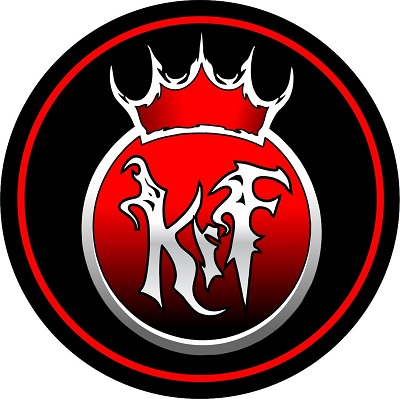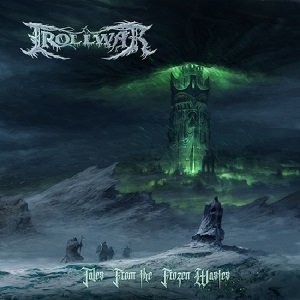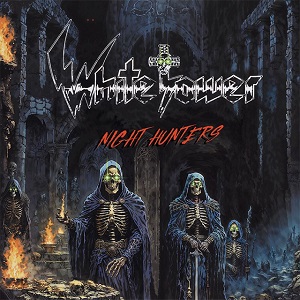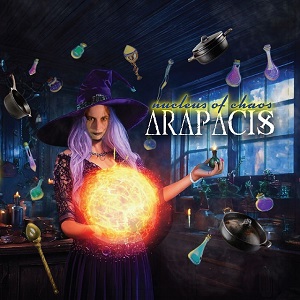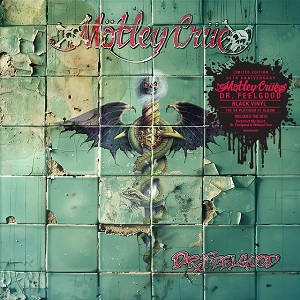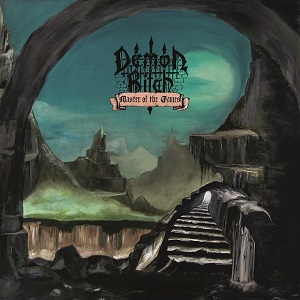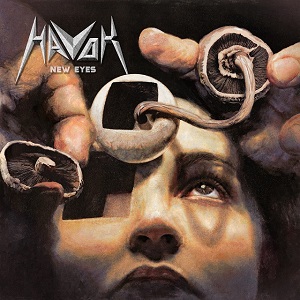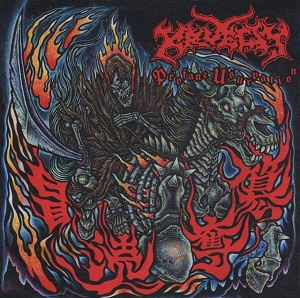Heavy Metal Fashion Sees Resurgence
March 24, 2006, 18 years ago
The Canadian (www.agoracosmopolitan.com) has issued the following report:
Heavy metal fashion is the style of dress, body modification, make-up, hairstyle, and so on, affected by many fans of heavy metal, or, as they are often called, metalheads. To those with informed heavy metal fashion sensibilities, and with particular reference to those people within the metal subculture, relatively subtle differences in clothing can speak volumes about a persons tastes and, more critically, show whether or not they are a "poseur"
Origins...
The clothing associated with heavy metal has its roots firmly ensconced within the clothing adopted by Biker culture, and even earlier the clothing commonly worn by the Rockers of the sixties. The bikers legacy to the modern metalhead is their affinity for leather jackets, heavy boots (often work boots or combat boots, distinct from the long steel-toed boots worn by Skinheads or the ornate footwear favoured by goths), jeans and denim jackets or waistcoats, often adorned with badges and patches (see below, see also kutte) and a peculiar fascination with the imagery of Nazi Germany, often to shock (It must be noted that the Swastika is normally avoided: the Iron Cross however, is particularly popular. See MOTÖRHEAD). However, the Iron Cross could also be traced back to the Crusades-era middle ages, a symbol of the Knights Templar. Metalheads have also been known to wear military clothing like field jackets and bits of camouflage uniforms like shirts and/or trousers to wear alongside their black T-shirts and black combat boots.
Other influences...
The style and clothing of metal has absorbed elements from influences as diverse as the musical influences from which the genre has borrowed: modern metal fashion is a hotch-potch of punk, goth (particularly for female metalheads), Military Fashion and even various historical fashions. It is from this linking of different sub-styles of clothing and music influences that one can sometimes determine a persons specific taste in music simply from overall appearance. For example, the use of black nail varnish and eyeliner, when combined with an overall metal appearance, may indicate that the person in question is a fan of goth metal or Doomdeath. However, such signs are not, in the majority of cases (we will discuss the peculiar and extreme fashions associated with Black Metal below) hard and fast rulings. This uncertainty is what makes the first key aspect of the metalheads identity below so important.
Band display...
A key and basic element of metal fashion is the outward display of one's musical taste. This can be accomplished in several ways.
Band shirts...
The band shirt is widely regarded as something akin to the 'minimum uniform' for a metalhead. T-shirts for metal bands are almost universally black, with only those bands popular enough to have fans beyond the metal community normally bothering to print T-shirts in other colours, though some print white shirts, normally as a statement against conformity. They come in two varieties: the normal T-shirt, and the longsleeve T-shirt, which will often feature designs down the arms as well as on the back and front. These shirts display on their front the name of a band, often accompanied by the bands logo or an album cover, and the back some tour list, lyrics, slogan, or another image.
There is a strong stigma against bands who wear their own T-shirts, which is seen as in bad taste at best, and highly egotistical at worst. It also must be noted that to wear a T-shirt for a band you have not heard is considered extremely bad taste.
Other shirts...
It is less common, but not at all unknown, for metalheads to wear T-shirts other than band shirts. Brands of alcohol (particularly Jack Daniels whisky), makes of Motorcycles, and humorous or obscene epithets are the most common. Again, black is the normal colour. It must of course also be noted that not all metalheads wear T-shirts: some may wear sleeveless shirts, wife beaters, work shirts, collared shirts or even no shirt, depending on taste and geographical location.
Patches...
Patches are small shaped pieces of fabric that carry a design: normally, at least in terms of metal fashion, a band logo or album cover. They are normally displayed on kutten. The traditional "patch jacket" is a black jacket, usually long sleeves, though denim jackets are also commonly used, they are rated more on the punk style. Backpacks, shoulder-bags,messenger bags etc. are another popular place on which to display them. A more unusual location is on another article of clothing, particularly jeans.
Other...
Band names are also sometimes displayed in the form of badges, which are displayed in much the same way as patches, although obviously the range of locations in which they can be placed is greater.
Jackets...
The most commonly worn types of jackes that metalheads wear are black leather jackets, blue demin jackets, trenchcoats and army combat jackets like field jackets, smocks, and parkas (usually in olive drab, black, or in camouflage patterns). In warmer weather, metalheads have been known to wear button-up flannelette shirts and button-up army shirts unbottoned (usually in olive drab, black, or in camouflage patterns) so it acts a de-facto jacket when the weather is not too hot or not too cold.
Legwear...
The most common form of leg-wear is black or blue denim jeans, although leather trousers are also popular, as are camouflage-patterned combat trousers and kilts.
Hairstyles...
The basic and most popular hairstyle associated with metal is long, straight hair, sometimes dyed black (especially amongst black metal fans), though this is by no means necessary. Other specific haircuts that are sported by 'metalheads' are dreadlocks (possibly inspired by Rob Zombie, Max Cavalera, and more recently Anders Friden) and military haircuts. Power Metal fans and bands have also adopted a variation on the long haired style that involves hair even longer than the metal norm, often curled. Usually, the long and messy hairstyle of metalheads is because the metalhead in question is a fan of headbanging, and want something to swing around rather then have nothing as it adds to the excitement and image of headbanging.
Accessories and jewellery...
Jewellery is popular for both genders. Almost always silver, popular items include rings (often adorned with metal imagery such as skulls, flames, spikes, iron crosses etc.) and silver neck-chains (thin when compared, for example to bling Jewellry) or pendants, often of a religious or anti-religious nature: inverted crucifixes, Satanic Pentagrams and Thor's Hammers are popular. This taste in pendants offers a marked difference between the metal and goth subcultures: goths will often wear crosses even if they are not religious, and will wear the benign, un-inverted Wiccan Pentagram.
Spike bands, wrist-bands and sweatbands are also very popular.
Body modification...
Metalheads often engage in some form of body modification, the most popular being tattoos, which will often employ the imagery of metal, metal lyrics or even band logos or mascots. Piercings are also not uncommon, although facial piercings, especially amongst male metalheads, are not particularly common, especially when compared to other subcultures such as emo.
Clothing for the female 'metalhead' shares much in common with elements of goth and punk fashion, combined with what is simply a feminised version of male metalhead fashion. The heavy monochrome makeup of goth is relatively popular among female metalheads, far more so than it is amongst the male metal fan, and jewellry and accessories can be similar as well, although female metalheads tend to borrow from the classic goth look, rather than Cybergoth, Victorian, Goth etc. One exception to this is female black metal fans, who sometimes dress in the somewhat elaborate victorian or medieval dresses normally associated with some elements of the goth subculture. In recognition of the increasing number of female fans which metal increasingly attracts, many bands, especially larger ones, have started doing "babydoll" versions of their shirts, or even new designs specifically for the female market. Skirts are normally black of some sort (sometimes leather), or punk-style kilts.
It is also more common for female metal fans to sport facial piercings and more elaborate ear work such as scaffolding.
Imitators...
Heavy metal fashion has seen a recent resurgence in the UK (and to some extent in Canada, and the U.S.). Mainstream 'pop' fashion retailers have picked up what is accurately labelled as a cross between heavy metal fashion and skater fashion and are successfully marketing it under the labels 'goth' or 'rock' fashion. This typically consists of t-shirts and hooded sweatshirts with heavy metal, "nu-metal", or punk logos, paired with baggy 'skater' jeans, chains, and dark colours. This is largely the result of the increasing popularity of nu-metal and skateboarding in the UK. Canada, and the USA.

